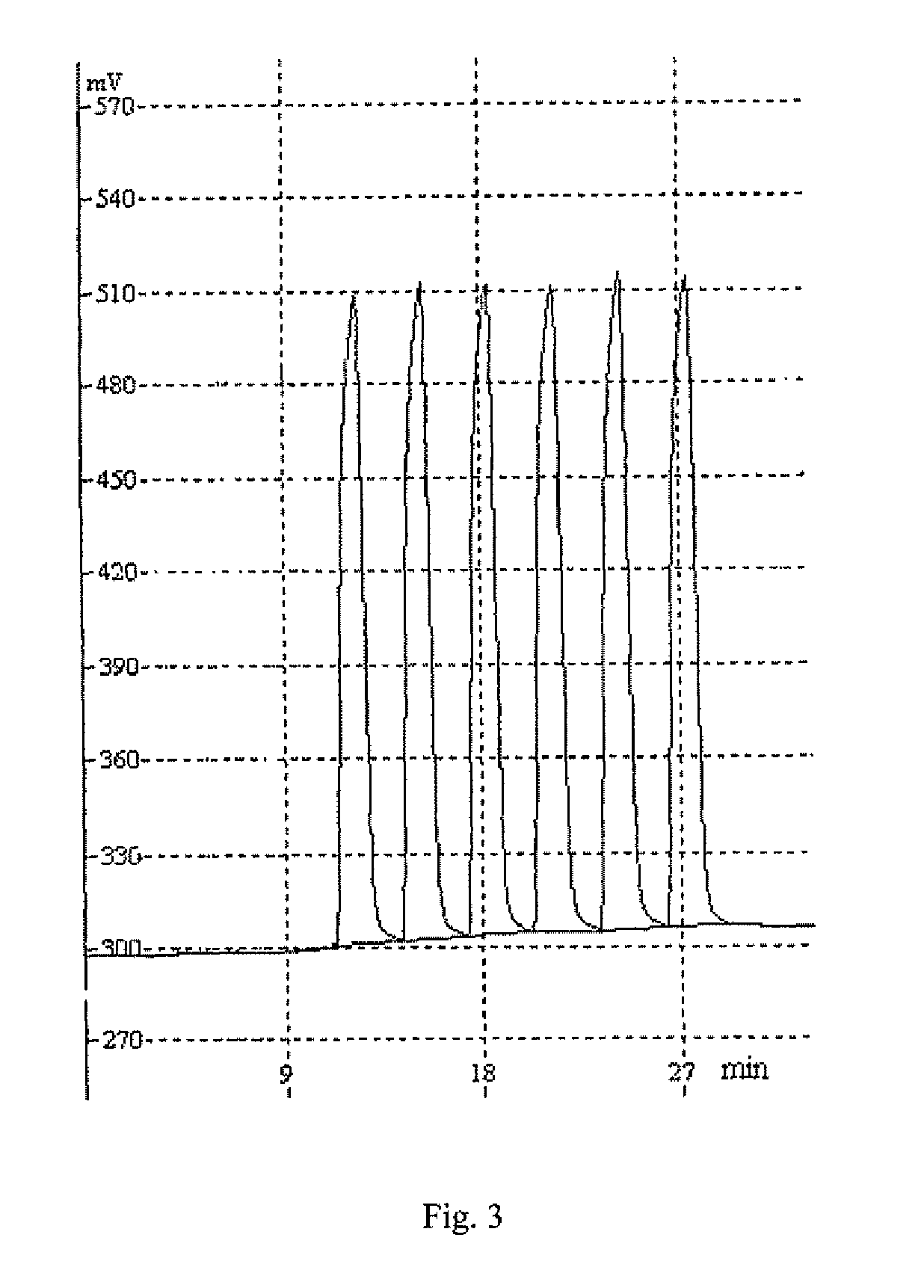Method for automatic assay of anionic detergents in seawater
an anionic detergent and automatic assay technology, applied in the field of anionic detergent assay, can solve the problems of deteriorating water quality, time-consuming and complicated procedures, harming working staff, etc., and achieves the effects of less chemicals, faster analysis, and less deterioration of water quality
- Summary
- Abstract
- Description
- Claims
- Application Information
AI Technical Summary
Benefits of technology
Problems solved by technology
Method used
Image
Examples
example 1
[0030]In this example, the testing sample was seawater, and the analysis was conducted as specified below.
[0031]1. Preparation of the Standard Samples
[0032](1) 0.100 g sodium dodecylsulfate (SDS) was dissolved in 1000 mL deionized water to provide a mother liquor having a concentration of SDS of 100 mg / L;
[0033](2) 0 mL, 0.050 mL, 0.100 mL, 0.200 mL, 0.300 mL and 0.400 mL of the mother liquor were respectively pipetted into a flask, and then each was diluted with blank seawater (i.e. seawater free of anionic detergents) to 50 mL such that a series of standard samples having respectively a concentration of SDS of 0 μg / L, 100 g / L, 200 μg / L, 400 μg / L, 600 μg / L and 800 μg / L were obtained.
[0034]2. Preparation of the Buffer Solution R1
[0035]To a solution formed by dissolving 0.500 g potassium biphthalate in 1000 mL deionized water was added 0.033 mL hydrochloric acid (1:1) to provide the buffer solution R1, which is an aqueous solution of potassium biphthalate (0.5 g / L) and hydrochloric a...
example 2
[0049]In this example, the testing sample was seawater, and the analysis was conducted as specified below.
[0050]1. Preparation of the Standard Samples
[0051](1) 0.100 g sodium dodecylsulfate (SDS) was dissolved in 1000 mL deionized water to provide a mother liquor having a concentration of SDS of 100 mg / L;
[0052](2) 0 mL, 0.050 mL, 0.100 mL, 0.200 mL, 0.300 mL and 0.400 mL of the mother liquor were respectively pipetted into a flask, and then each was diluted with blank seawater (i.e. seawater free of anionic detergents) to 50 mL such that a series of standard samples having respectively a concentration of SDS of 0 μg / L, 100 μg / L, 200 μg / L, 400 μg / L, 600 μg / L and 800 μg / L were obtained.
[0053]2. Preparation of the Buffer Solution R1
[0054]To a solution formed by dissolving 0.300 g potassium biphthalate in 1000 mL deionized water was added 0.33 mL hydrochloric acid (1:1) to provide the buffer solution R1, which is an aqueous solution of potassium biphthalate (0.3 g / L) and hydrochloric a...
PUM
 Login to View More
Login to View More Abstract
Description
Claims
Application Information
 Login to View More
Login to View More - R&D
- Intellectual Property
- Life Sciences
- Materials
- Tech Scout
- Unparalleled Data Quality
- Higher Quality Content
- 60% Fewer Hallucinations
Browse by: Latest US Patents, China's latest patents, Technical Efficacy Thesaurus, Application Domain, Technology Topic, Popular Technical Reports.
© 2025 PatSnap. All rights reserved.Legal|Privacy policy|Modern Slavery Act Transparency Statement|Sitemap|About US| Contact US: help@patsnap.com



